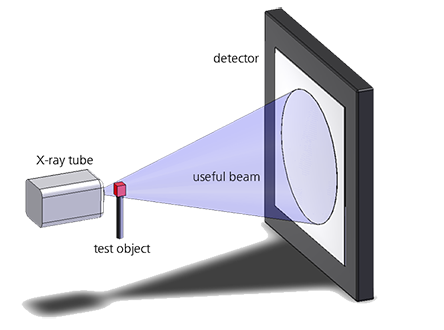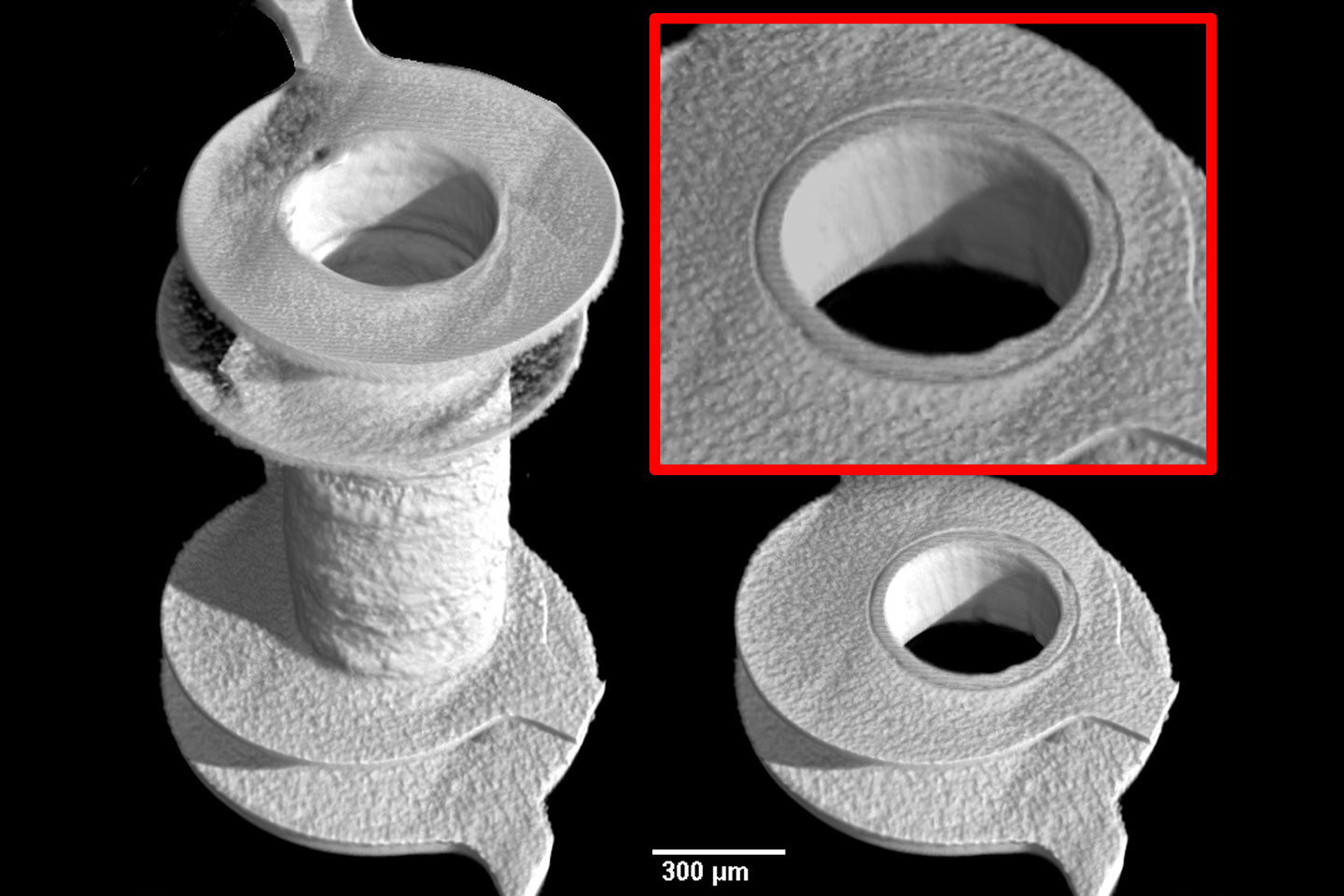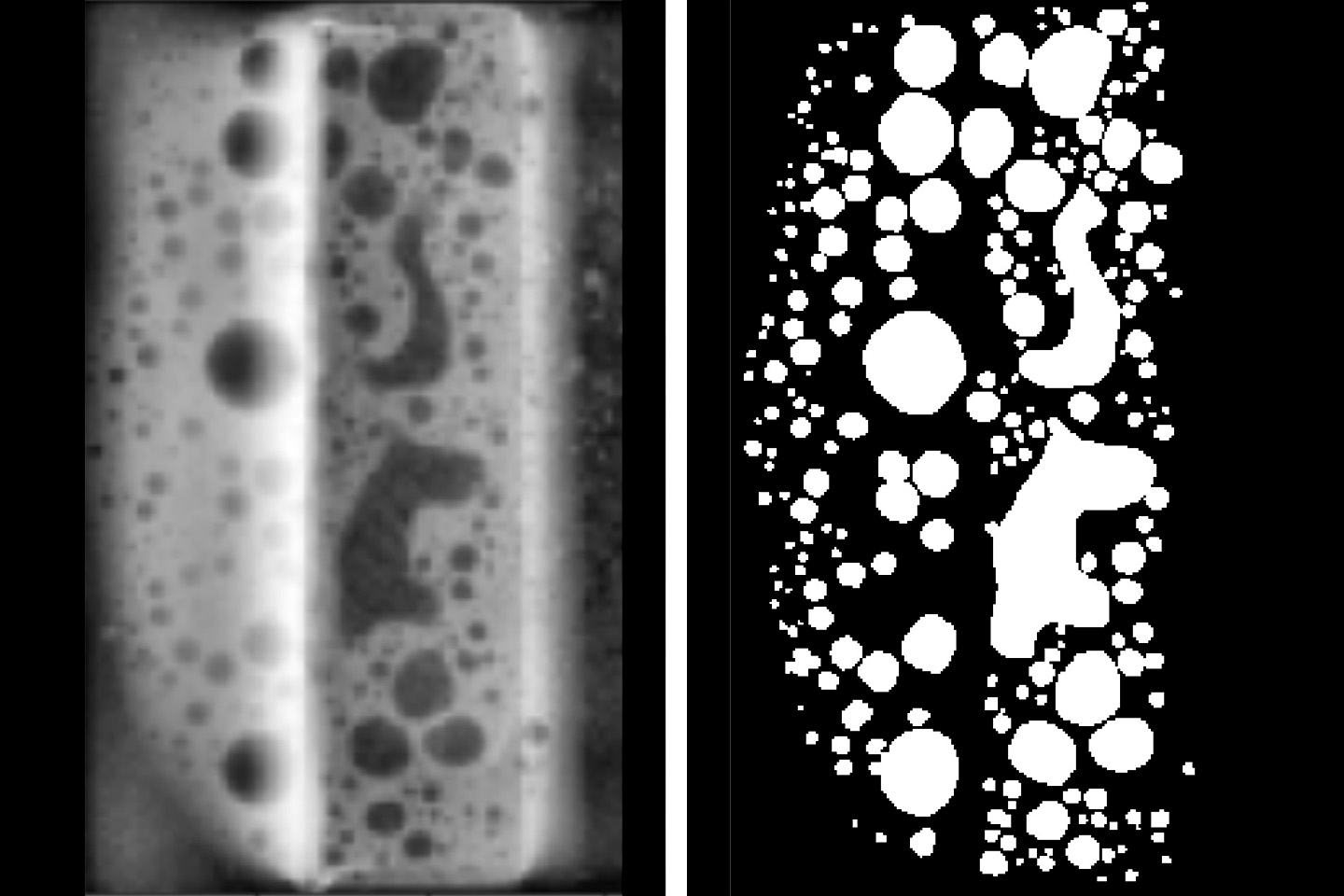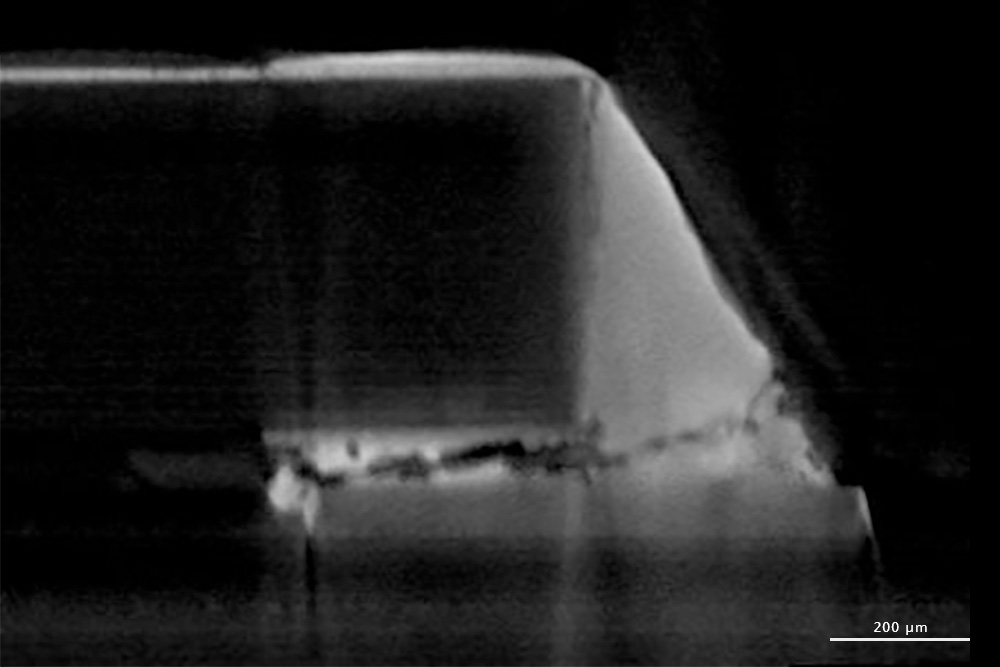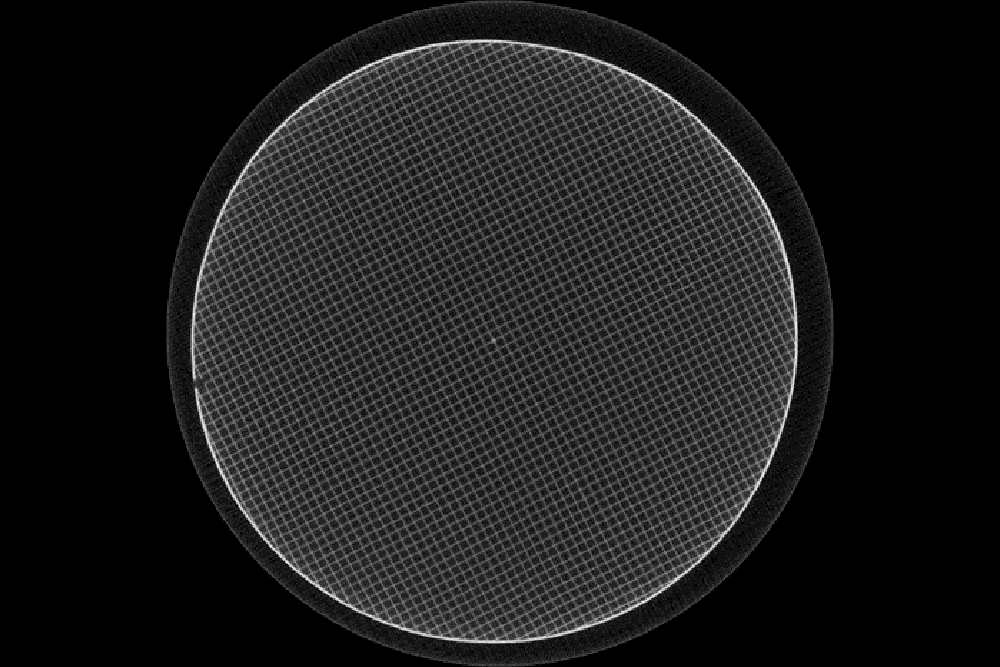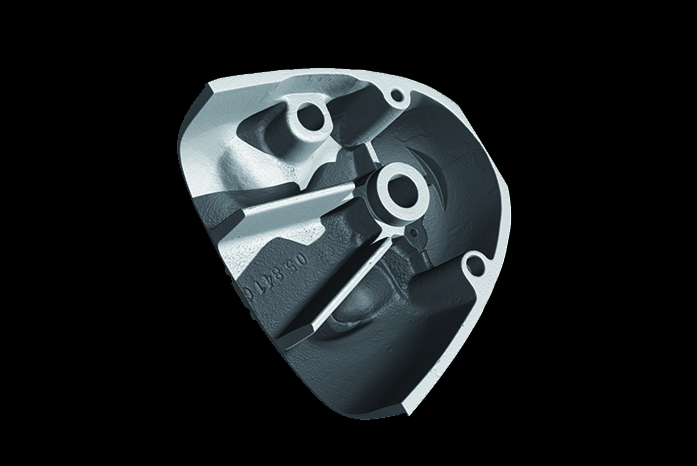Industrial micro X-ray Computer Tomography (micro-CT) is an established analysis method at Fraunhofer IKTS in Dresden for component inspections and small series testing. It is ideally suited to detecting inclusions, cracks, pores and other material inhomogeneities within an object of any shape and thus to carrying out pore analyses, dimensional accuracy analyses or completeness tests. Void analyses, e.g. of solder contacts, are already possible using 2D radiography. Micro-XCT allows non-destructive three-dimensional testing of objects with a high spatial resolution.
The micro-XCT device set up at Fraunhofer IKTS can be adapted to the respective customer-specific requirements. Therefore, both very small components, for example from the electronics industry, and large objects, such as components from the automotive industry, as well as art objects or fossils, can be examined.
The test object is positioned on a rotation table between the X-ray tube and the detector so that it can be fully or partially irradiated. During computed tomography, the rotation table rotates 360° with the sample. The rotation takes place in 800 to 1600 angular steps. This produces projections in different orientations. A computer cluster reconstructs the volume model of the test specimen in parallel with the measurement.
Immediately after the measurement process, a 3D volume data set is available for evaluation. The volume data set essentially represents the spatial density distribution of the sample. Spatial sectional images can be placed in any orientation within the 3D volume data set. This enables a precise evaluation of the test specimen regarding its internal structure (pores, cracks, air inclusions, material inhomogeneities, etc.).
